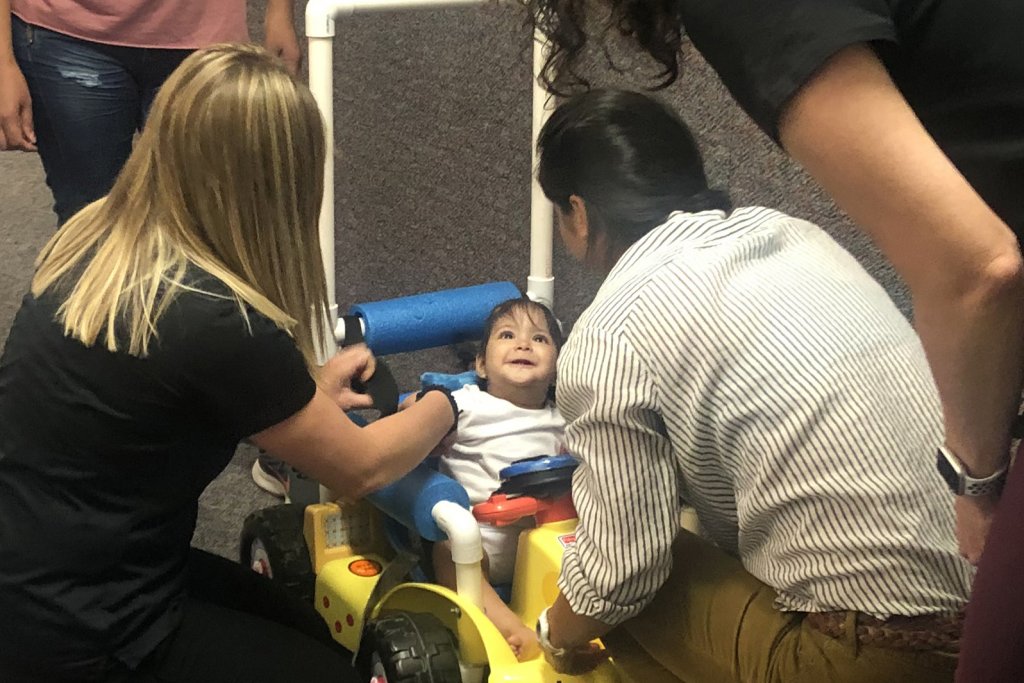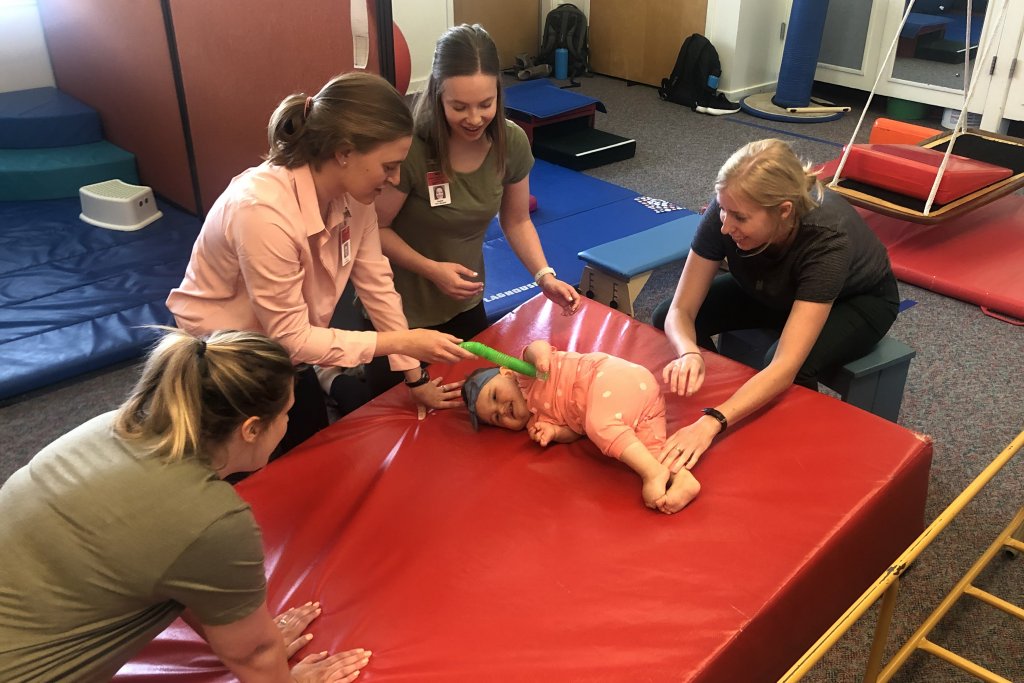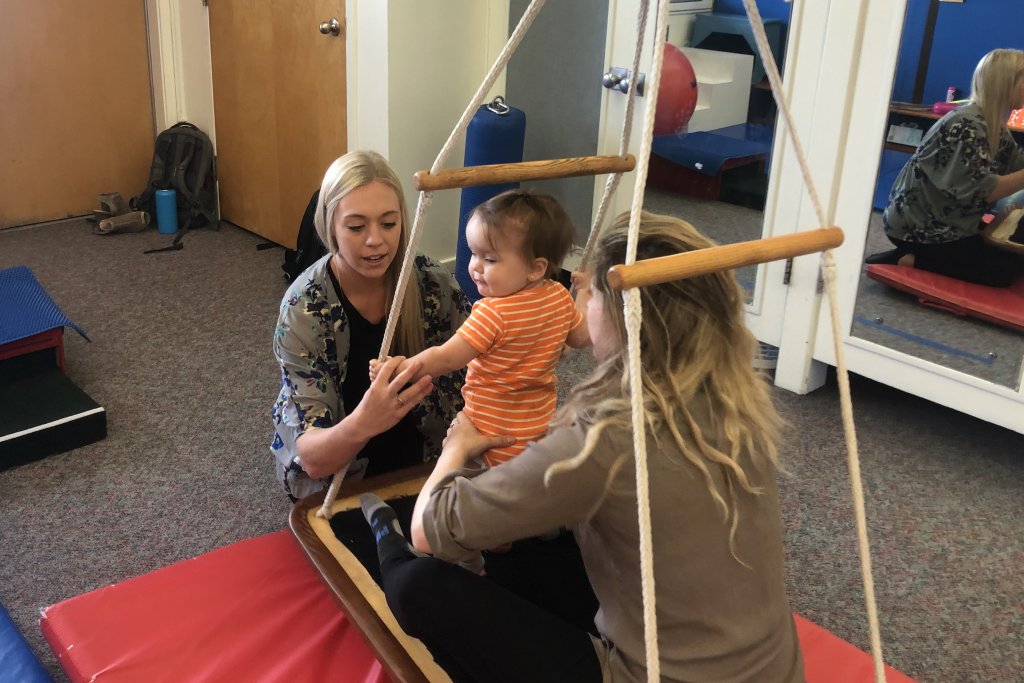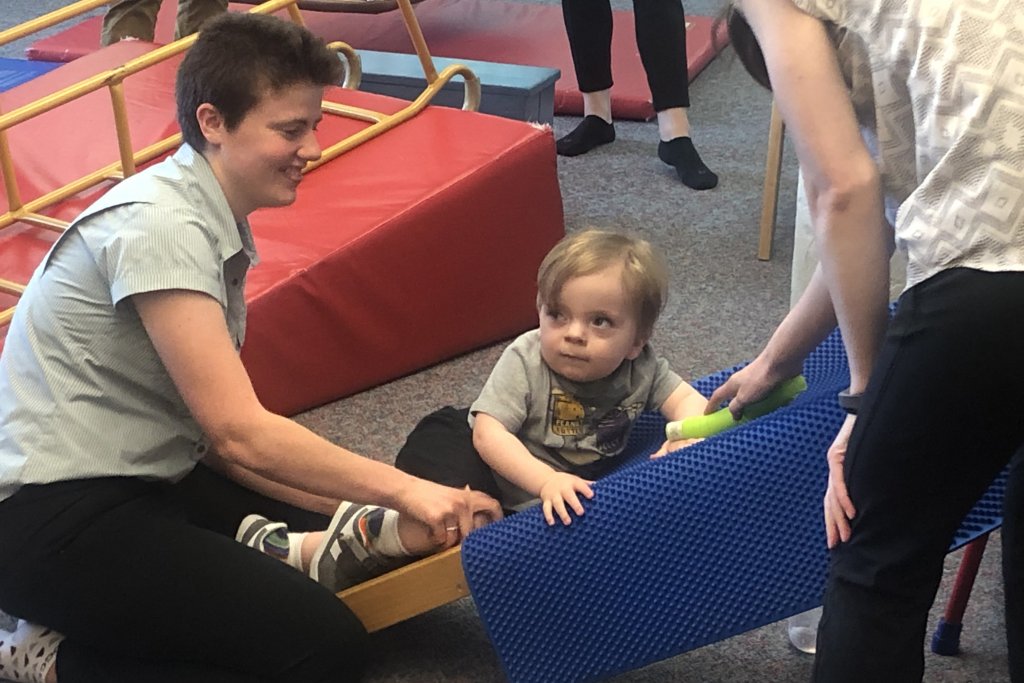There are few things more joyful than watching children play. That joy is perhaps even more palpable when watching children play, grow and learn with the help of Eastern Washington University physical therapy students. Last week, Joya Child and Family Development Center in Spokane was the setting for personalized therapy sessions involving nine EWU students and four local children undergoing treatment for developmental delays and disabilities.
The program was created last year by EWU instructor and Joya physical therapist, Ginette Kerkering, after she realized that working with kids at Joya would be a perfect opportunity for Eastern students to get hands-on training at a pediatric facility.
“The lab on campus is really just set up for adult clients and students,” says Kerkering. “Because they are able to come to Joya to complete this, they are able to work with kids in a kid friendly environment with all of the standard equipment available that is used to work with kids.”
Joya Child and Family Development, formerly the Spokane Guilds’ School and Neuromuscular Center, is located at Garland and Belt in Northwest Spokane. The facility provides developmental therapy for children up to age 3. Inside, the therapy often looks more like play time––with toys, cheers and laughter.
The Pediatric Summer Seminar is offered to Eastern physical therapy graduate students interested in working with the youngest of patients. The students are entering their third and final year in the program, which is spent doing clinical internships.
“This is a great experience for them to get some hands-on time learning to evaluate and develop a treatment plan for children,” says Kerkering. “Then they get to follow through on their treatment plan and make changes daily depending on what works and what doesn’t work. They also get exposure talking to parents.”
“It’s been amazing so far,” says third year graduate student Hannah Carey-Brown. “It’s been our first clinical experience working with pediatric patients and so we got to apply what we’ve been learning for the past two years.”
The nine students in the class broke off into groups of two or three to work with the four clients, ages 8-months to 20-months. Carey-Brown and fellow third year graduate student Danielle Watsek worked together with 8-month-old Arleth during the week and a half long seminar.
“For us it works really well to have both of us because we’re working with an 8-month-old,” says Watsek. “One of us kind of supports her in sitting or kneeling or whatever position we have her in, while the other works to entertain her with noises and toys and facial expressions.”
Baby Arleth saw many successes in the therapy sessions. Carey-Brown and Watsek say they saw improved movements in her upper and lower body in the days following their initial evaluation. The students noted that Arleth also improved the movement of her arms, and was showing progress in using her arms together.
Arleth’s therapy ended with an activity that looks a lot more like fun than work––she took a ride in the “Go Baby Go” car. Once safely secured in the tiny car, all Arleth had to do was press a button to make the car go. With a little help from her student physical therapists, she cruised a couple of laps up and down the hallway.

“It was clear to us that she was really enjoying it because she kept her hand on the button,” says Carey-Brown. Arleth could have lifted her hand off the button if she didn’t like it, Carey-Brown adds.
The Go Baby Go car was created to give children with disabilities the freedom to move. As Carey-Brown explains, the kids learn that their movement, pushing a button in this case, can cause motion. Research shows that the use of these cars helps kids talk sooner, play sooner and engage with others, says Carey-Brown.
The Go Baby Go car concept, developed by researchers at the University of Delaware, is now used in development centers and medical facilities all over the country. Kerkering says the car used at Joya was created by EWU Occupational Therapy students.
Beyond the fun of the Go Baby Go car, all of the clients recorded successes working with the Eastern students.
“All four of the clients that we worked with this summer completed a new movement task in this short-term session,” says Kerkering.
One-year-old Nova rolled over for the first time during her therapy sessions. On the last day she rolled multiple times while a crowd of students and her family watched and cheered her on.
Eighteen-month-old Melody walked for the first time with the help of her EWU students, and 20-month-old Emmett was walking, climbing up ramps and showing more engagement by the end of the sessions.

Nova, 12-months 
Melody, 18-months 
Emmett, 20-months
The parents, already clients at Joya, did not pay anything extra for these sessions with EWU students. That likely contributed to the joy on their faces as they watched their little ones grow stronger with each student-led therapy session.
“The EWU students have so much creativity and enthusiasm and are very invested in their little clients,” Kerkering says. “And our little clients get to be teachers to the graduate students by showing them their skills and how to help them moved. I think that everyone goes home tired but smiling.”
If you would like to learn more about Eastern Washington University’s physical therapy department, please visit their website.

